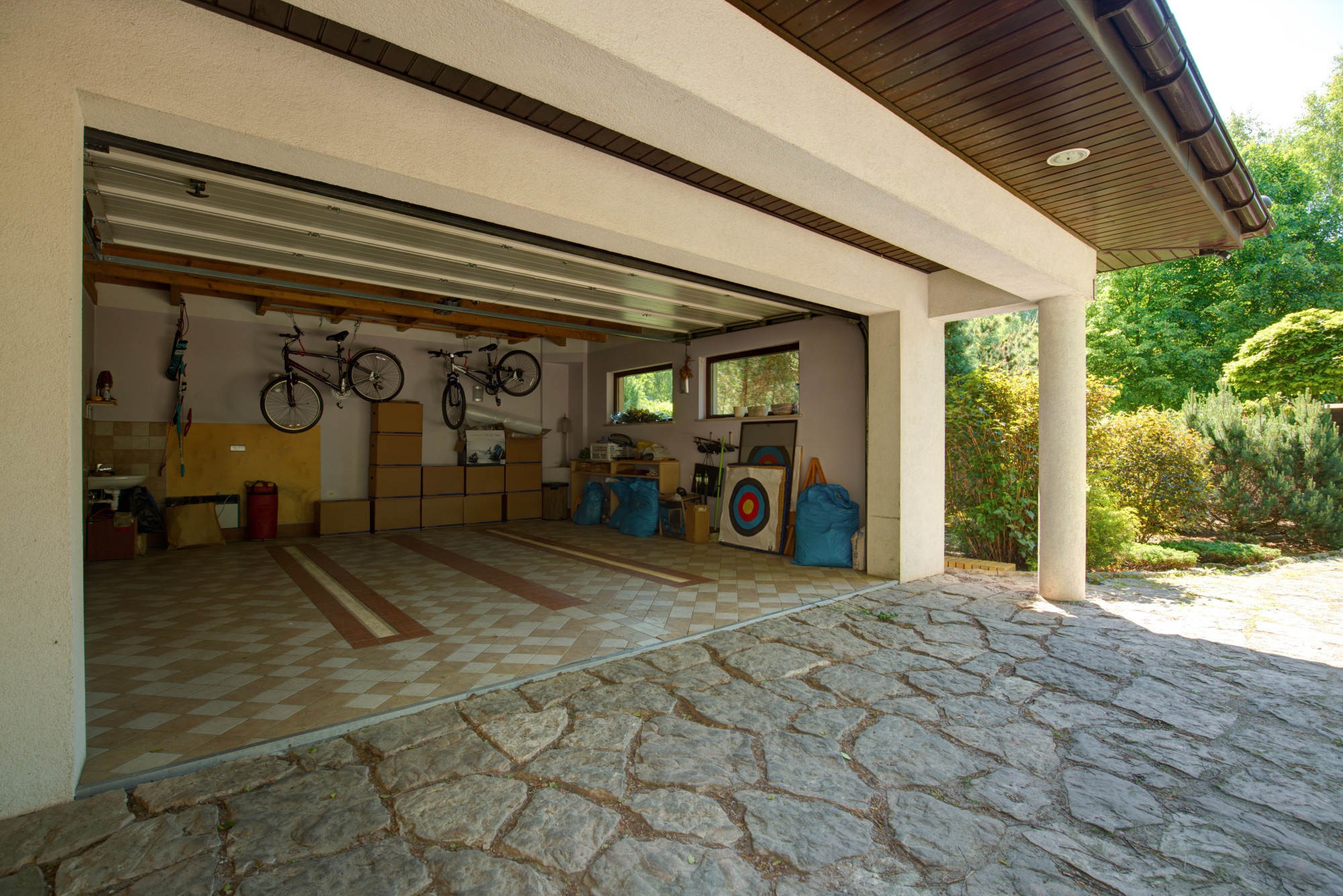Over half of all residential buildings in the United States have a garage or a carport. If your home is one of those without, then you’ll probably want to consider building a garage for your own home.
But where to start? Well, there are a few things that you need to consider throughout the entire process, and we’re going to take you through some of them now.
Keep reading for your ultimate guide on how to build a garage.
Choosing the Right Location
Before you start building a garage, you have to first go through the process of planning a garage. Several key factors need to be considered when choosing the location of your garage.
Accessibility is paramount. Opt for a spot that allows easy entry and exit. Consider proximity to your home or driveway.
Next, examine the topography of the area. Avoid low-lying or flood-prone zones to prevent water damage.
Take into account the orientation of the garage to maximize natural light. You’ll also need to consider the neighboring structures and ensure adequate space for vehicles.
Lastly, think about future expansion needs and how the garage location will accommodate them.
Assessing Building Permits and Regulations
Begin by researching local building codes and regulations applicable to your area. Contact the relevant authorities to inquire about specific requirements and any permits that may be needed.
Understand that setbacks, height restrictions, and zoning regulations might scupper your plans.
It is essential to comply with these regulations to avoid legal issues and ensure the safety of your garage.
Determining the Size and Layout
Determining the size and layout of your garage is a crucial step in the process of designing a garage.
Start by assessing your needs and the intended purpose of the garage. Consider the number and size of vehicles you want to accommodate, along with any additional storage requirements. Take measurements of the available space and ensure it is suitable for your desired dimensions.
Be sure to plan the layout carefully, allowing for efficient traffic flow and easy access to tools and equipment. Factors like overhead clearance and the inclusion of windows for natural light should also be considered.
Selecting the Construction Method
There are a few construction methods that you could choose from here.
One common method is stick-built construction. This method uses traditional wood framing techniques. It offers versatility and customization but requires skilled labor.
Pre-engineered metal building kits are another choice. They provide durability and cost-effectiveness. They are the quickest to assemble.
Concrete block construction offers strength and longevity. Building this way is a lengthy process though.
No method is better than any other. The key is making sure that the method you choose aligns with your budget, timescale, and preferences. Don’t rush this step, as it is the most important part.
Planning the Foundation
Begin by evaluating the soil conditions to ensure stability. Concrete slabs or a pier foundation are two of the options available to you.
A concrete slab offers a solid and level surface but requires proper drainage. A pier foundation involves individual footings to support the structure but requires more labor.
Determine the appropriate foundation depth based on local building codes and soil conditions. Ensure proper reinforcement and consider factors like frost lines and water table levels.
Adequate planning of the foundation will provide a sturdy base for your garage, ensuring its longevity and structural integrity.
Designing the Structure
If you wish to do so yourself, you can design the structure to your own specifications.
Consider the desired shape and style, such as a gable, hip, or flat roof. Choose a suitable roof pitch for drainage and aesthetics. Make sure to determine the number and size of doors and windows based on functionality and natural light requirements.
Consider what the appropriate wall height should be and make a note of any additional features you want, like skylights or attic storage.
It’s important to select materials that balance durability, cost, and aesthetics. Some good options are wood, metal, or vinyl siding. Properly designing the structure will result in a functional and visually appealing garage that meets your specific needs and preferences.
Framing the Walls and Roof
The walls and the roof are the two components most responsible for the structural integrity of your garage, so it’s important to frame them correctly.
Start by marking the layout of the walls and determining the spacing for any studs. You’ll want to use sturdy lumber and be sure to secure them with nails or screws.
Braces are also a good addition if you require extra stability.
For the roof, frame the trusses or rafters according to your chosen design. For optimal structural integrity, be sure that they are properly aligned and spaced.
Sheathing should be installed to provide a solid base for the exterior covering.
Proper insulation and ventilation is vital to maintain a comfortable environment inside the garage.
Installing Doors and Windows
Of course, if you are planning to erect any building, then windows and doors are a necessity.
The first thing you should do is measure and mark the locations for doors and windows to be installed. There are many different types of doors that you could choose from. Pick the one that best suits your needs, your options include overhead doors, roll-up doors, or hinged doors.
When it comes to windows, be sure to install them strategically to maximize natural light and ventilation. Consider the size, placement, and style of windows that complement the overall design.
When choosing windows and doors, you need to test their functionality, ensuring smooth operation and proper sealing.
Considering Electrical and Lighting Needs
Having a fully-built garage is all well and good but you’re going to need to be able to see while you’re in there. Once you’ve got the basic structure up, you need to turn your attention to the electric and lighting needs of the garage.
Plan the electrical layout, including outlets, switches, and circuit breaker panels. This isn’t a step that you should try and DIY if you’re not confident and experienced working with electrics. You’ll most likely need a licensed electrician to carry out the work and ensure compliance with local codes and regulations.
The electrician will work to the brief that you give him, so make sure that they install sufficient lighting fixtures to illuminate the entire space effectively.
Consider overhead lights, task lighting, and exterior lighting for security. Opting for energy-efficient options like LED bulbs could be a good idea if you want to keep your electric bill low.
Be sure to instruct the electrical on where you would like electrical outlets to be placed. Consider what you will need the outlets for, things such as power tools or charging stations, for example.
Install appropriate wiring for any additional features like garage door openers or ventilation systems.
Adding Storage and Organizational Features
Adding storage and organizational features to your garage is key for maximizing space and maintaining order.
Shelving units or cabinets are great for keeping items off the floor and making everything easily accessible. You can also utilize hooks, pegboards, or slatwall systems for hanging tools and equipment.
Overhead storage options are ideal for smaller garages or for storing bulky items or seasonal belongings. If you’re going to use your garage for DIY projects or work, then try to incorporate workbenches or tool chests for efficient workspace organization.
Make use of your available wall space with magnetic strips or racks for smaller items. Customizable storage solutions can be tailored to your specific needs.
Finishing the Interior and Exterior Surfaces
Once the structure is up and the internal elements are all in place, you’ll want to turn your attention to the finishing touches. Doing things like coating your garage floor and adding the desired paint jobs will help turn your new garage into something that you can be proud of.
First things first, prepare the surfaces. Sand the walls and patch any imperfections. Now you can paint. Before you do, though, be sure to apply primer to ensure proper adhesion.
Choose a durable and easy-to-clean paint for the walls and ceilings. The color scheme is up to you of course, but light colors tend to enhance brightness.
For the floor, options like epoxy coatings or concrete stains provide durability and a clean appearance. But there are plenty of other coating options for you to choose from.
Externally, select suitable siding materials that complement the overall design and provide weather resistance.
You should not forget to take the elements into consideration. Adding gutters and downspouts are effective for rainwater management. Thinking about safety, be sure to install proper lighting on the outside.
Landscaping touches around the exterior of the garage can help to add curb appeal to your property.
Building a Garage Doesn’t Have to be Difficult
Building a garage can seem like a daunting task at the outset. But, as you can see, there are some basic things that you can take into consideration to make the task much easier than it seems.
Just pay attention to these things, and if you have the time and budget, seek expert help on aspects such as design and construction. It is especially advised to seek the help of an electrician to aid you with the wiring and lighting in the garage.
If you enjoyed this article, be sure to check out some more of our great content today.











